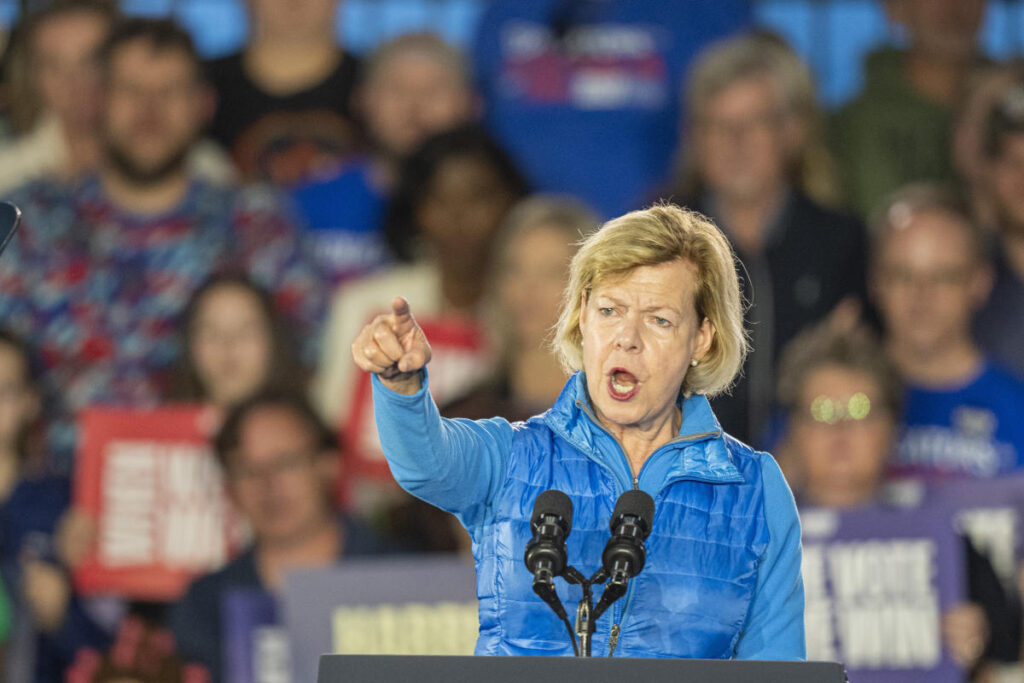In a closely contested race, Wisconsin Senator Tammy Baldwin achieved victory for a third term, marking a significant win for Democrats in a state that had recently leaned towards Republicans, notably in the presidential election where Donald Trump emerged victorious. Baldwin, a Democrat, defeated her Republican opponent Eric Hovde, a bank owner and real estate investor with Trump’s endorsement, in a race that finalized with a narrow margin. With unofficial results showing her leading by just 0.9%, Hovde has yet to concede, leaving open the possibility of a recount given that the difference falls within the one-percentage-point threshold necessary for such a request.
After the Associated Press confirmed her victory, Baldwin proclaimed, “The voters have spoken,” emphasizing her commitment to prioritize the needs of Wisconsin’s citizens. The senator declared her victory following the counting of absentee ballots in Milwaukee, which played a crucial role in solidifying her lead. Hovde, however, remained noncommittal, expressing his disappointment and suggesting that a so-called “fraudulent candidate” had siphoned votes from his campaign, reflecting the ongoing contention in the race. This candidate, Thomas Leager of the America First Party, although finishing in fourth place, garnered enough votes to exceed the margin between Baldwin and Hovde, leading to allegations of strategic interference.
Hovde’s implication that Baldwin’s camp had orchestrated a plan to divide conservative votes was a notable point of contention. He indicated that the presence of Leager, whom he referred to disparagingly, had skewed the race’s outcome. Hovde conveyed disappointment to his supporters, stating that had this external factor not been present, the election result could have been determined sooner in his favor. Despite Hovde’s claims, Baldwin’s campaign successfully resonated with voters, who ultimately chose her based on her commitment and bipartisanship efforts, including the unprecedented endorsement from the Wisconsin Farm Bureau, a key agricultural organization.
Throughout her campaign, Baldwin, known for her progressive record, focused on her collaborative approach to governance, which played a significant role in her reelection strategy. In seeking to balance her liberal voting history, she underscored her willingness to work across party lines. This bipartisanship theme appeared to resonate with the electorate in a competitive political landscape, especially as Democrats sought to secure Baldwin’s seat amidst a Republican surge in various other states, where they flipped Democratic-held seats like those in Ohio and West Virginia.
Baldwin’s previous election history indicates a solid electoral base; she first won her seat in 2012 against popular Republican figure Tommy Thompson by nearly six points, and she secured reelection in 2018 by a significant eleven-point margin. These successes highlight her ability to appeal to Wisconsin voters over multiple election cycles. This time, however, her victory comes amid a more fragmented political environment, showcasing the shifting demographics and voter sentiments at play in the wake of the Trump presidency.
The outcome of Baldwin’s race not only preserves a Democratic seat in the Senate but also reflects broader trends in Wisconsin’s political landscape, where contentious races have typically been decided by razor-thin margins. Democrats were keen to maintain Baldwin’s position and avoid a complete Republican lock on the state’s Senate representation. As Baldwin’s win signals a consolidation of Democratic influence in a critical swing state, it also sets the stage for continued political battles as both parties recalibrate their strategies in response to the evolving electorate and contentious issues resonating within state and national contexts.

